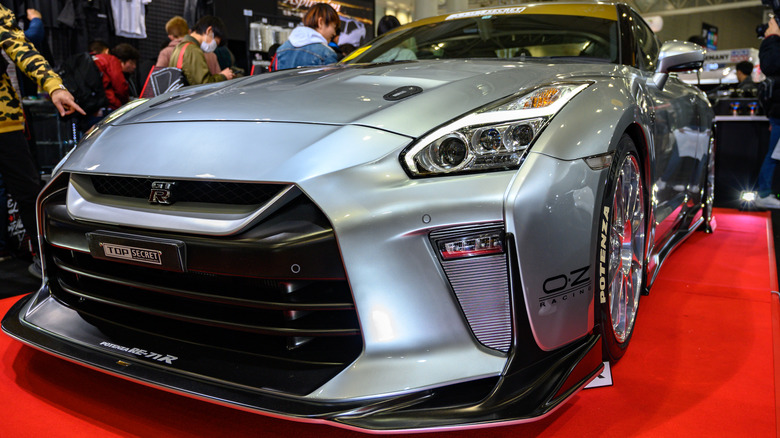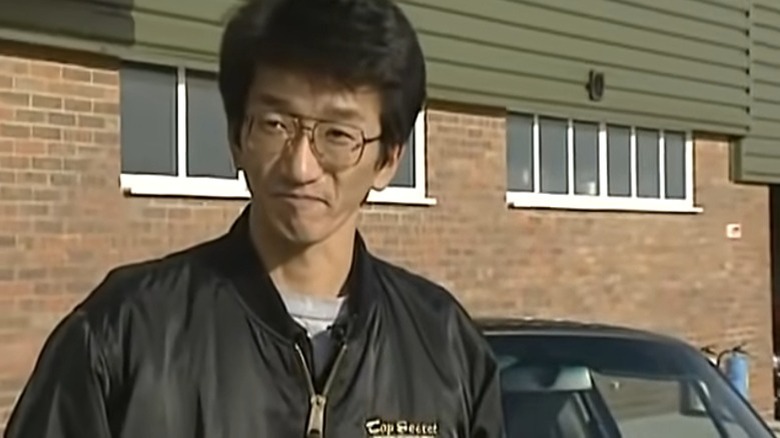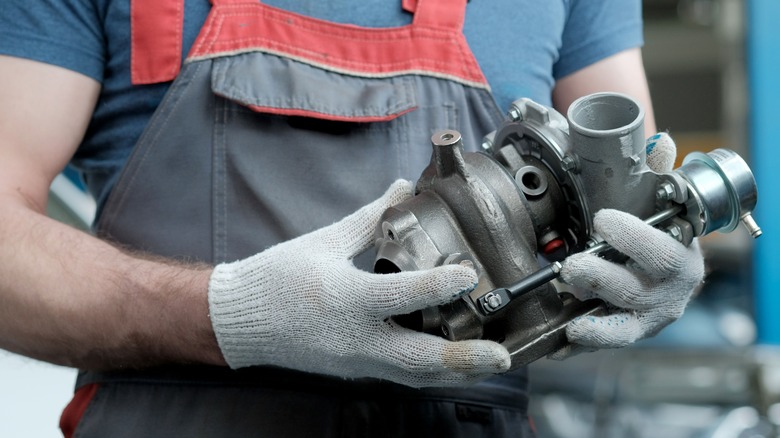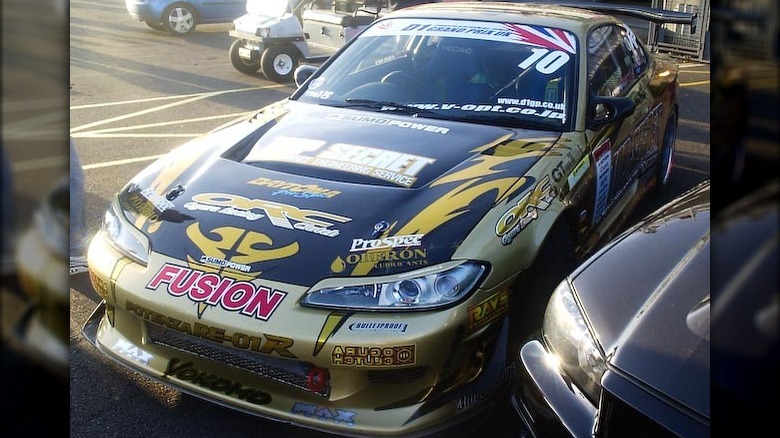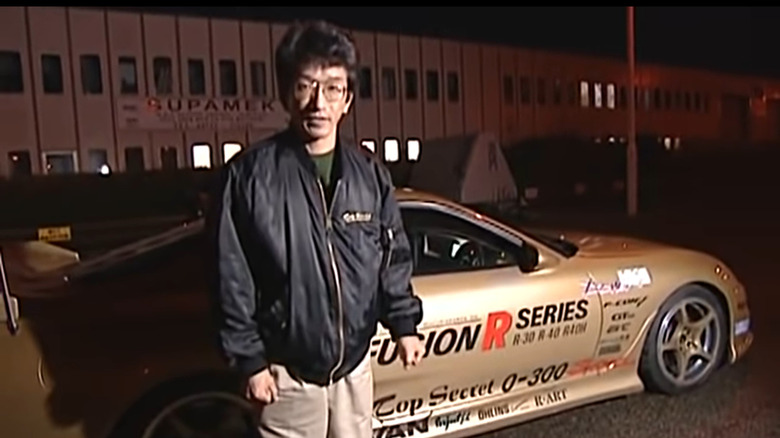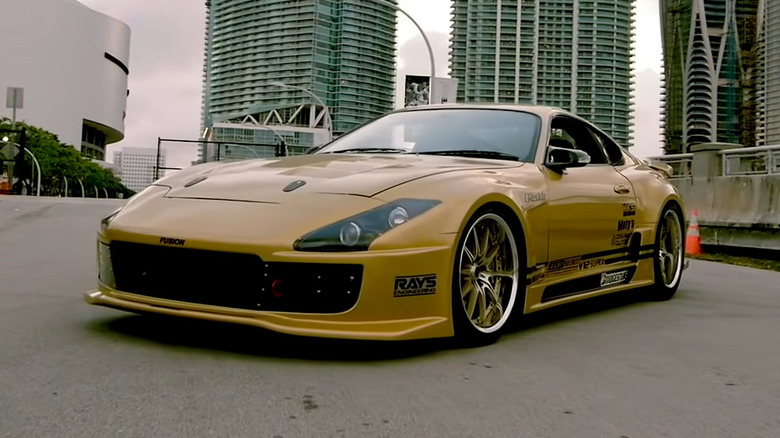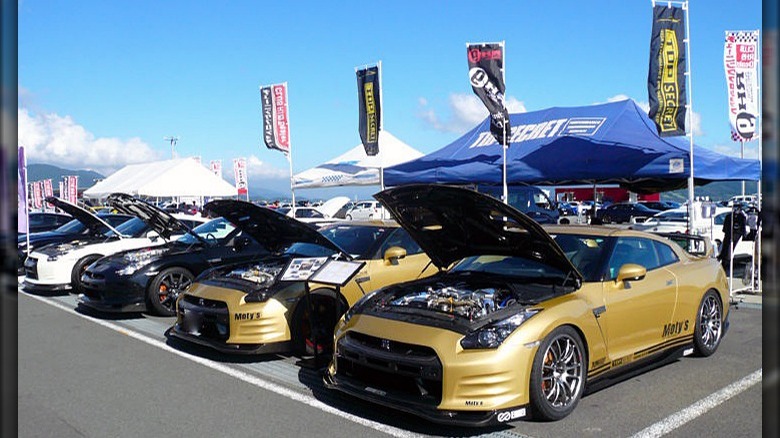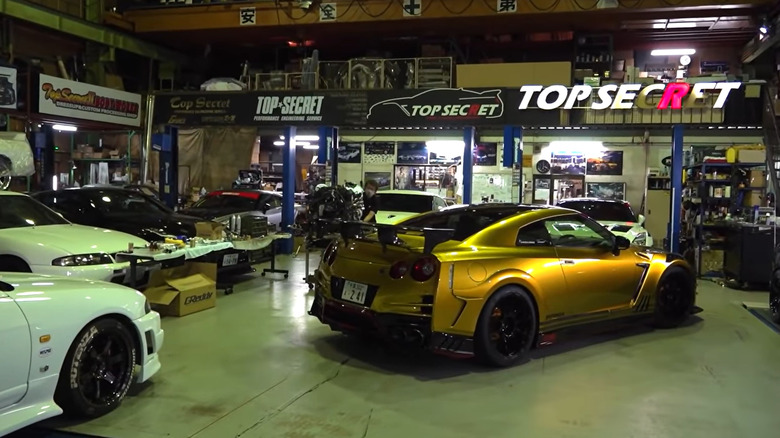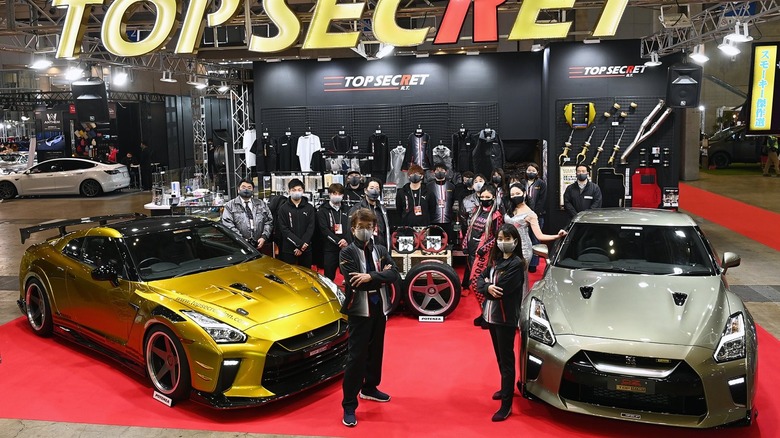JDM Speed Demon: Who Is Smokey Nagata?
One of the most enigmatic figures in the JDM tuning scene, Kazuhiko "Smokey" Nagata's nickname came from the clouds of tire smoke his cars would leave in their wake when reaching unthinkable speeds, often on public roads. His exploits in both Japan and abroad were well documented by magazines in the '90s and '00s, which propelled him to international stardom. The tale of a Japanese farmer's son who became an internationally renowned speed demon is an unlikely one, but then again, Nagata's entire career has been anything but ordinary.
Although his days of high-profile (and highly illegal) stunts are seemingly behind him, Nagata is still just as active as ever in the tuning scene, helming his infamous Top Secret outfit from its long-established headquarters in Chiba. He doesn't give many interviews, as he generally prefers to let his cars do the talking. There are many of them –- over the years, he's worked on a large variety of JDM cars, but there are a few that remain particularly of interest to him.
Here is the story of Smokey Nagata and the long shadow he has cast on the JDM tuner scene.
Nagata's early life
One of Nagata's most comprehensive interviews comes courtesy of Top Gear, where he explained how he got into cars from an early age. His parents worked on a farm in the northern Japanese prefecture of Hokkaido -– a far cry from the bustling metropolis of Tokyo where he would eventually make his name. Rural Hokkaido is most famous for its snow-capped mountains and traditional culture, which didn't have much appeal to Nagata as a young man. An interest in cars ran in his family and so, while still too young to legally drive, a 16-year-old Nagata bought himself a Mitsubishi Galant GTO and fixed it with the help of a local Toyota executive.
His illegal driving led him to be kicked out of school, although shortly after, he was offered a job at the same Toyota dealership that had helped him fix his car. He lasted several years in the job but was caught using working hours to modify his own car and was promptly fired, leaving him with no income and no school qualifications either.
His first tuning job
With few opportunities to progress his car modification skills and even fewer places to actually test out his projects, Nagata decided to leave Hokkaido and move across Japan to Tokyo. There, he managed to get his foot in the door at Trust, the company behind the GReddy brand. Talking to Speedhunters, Nagata said that his first job at the firm was packaging parts to be shipped to customers. It was hardly his ideal job, but after he demonstrated his considerable skill to bosses at Trust's racing division, he was given a more hands-on role in assisting the race team.
Through his promotion, Nagata was able to learn how to make his own racing parts and often crafted them after working hours behind his bosses' backs. His hobby of making his cars faster soon caught the attention of others, and before long, his secret parts-making operation was churning out upgrades for both his own and other street racers' cars. Eventually, his bosses found out about the illicit aftermarket outfit that Nagata was running but decided to turn a blind eye as he was a valuable employee.
In an interview with DSPORT, he said the inspiration for his brand came directly from this incident: his after-hours projects were from then on referred to by both parties as "top secret."
Forming Top Secret
By 1991, Nagata's projects had become all-consuming, and he decided to leave Trust and branch out on his own. He launched Top Secret the same year, and in the company's earliest days, had to resort to unconventional tactics to get his name known. He first exhibited at the Tokyo Auto Salon in 1993 but also showed off one of his customer cars at a nearby street race to prove his brand's tuning superiority. Tokyo was also in the midst of building a new expansive set of highways at the time, which gave Nagata the perfect testing ground for his creations.
It wasn't long before Nagata's high-speed, law-defying test runs across Tokyo began to gain him widespread recognition, not just in the Japanese tuning scene but also internationally. In particular, the British tuning magazine Max Power –- a laddish but immensely popular title in its home country -– was particularly impressed by his stunts. They first sent a reporter out to Japan to witness one of Nagata's illegal night runs first-hand and then invited him to the UK to exhibit at a major car show.
[Featured image by Willirennen via Wikimedia Commons | Cropped and scaled | CC BY 3.0]
The British motorway incident
It was during his trip to the UK that Nagata's most infamous late-night run would occur. After his RB26DETT-powered Supra had impressed the crowds on a stand at the motor show, Nagata suggested that he test the car out on the A1, a stretch of four-lane highway near to the magazine's headquarters. Both Max Power and Japanese magazine Option were keen to see what the car could do, and so Nagata obliged, taking the Supra up to speeds north of 190 mph while reporters caught the entire incident on video.
His target was to hit 200 mph, although his initial runs fell a few mph short, and so he kept trying for nearly two hours. At around four in the morning, Nagata was stopped by British police officers and arrested for speeding, which led to him being taken to jail and having his car impounded. He couldn't speak English, so he spent several hours in the cells while a translator was arranged.
The police couldn't prove what speed Nagata was doing, and thankfully for him, they had no way to check the camera that had captured the record-breaking run. Nagata admitted to speeding and was given a remarkably lenient sentence: a suspended license, a small fine, and a deportation order. It took mere hours for news of the Supra's speed to reach the British newspapers, and by the time Nagata left his hotel to go to the airport the next morning, the area was swarmed by the press.
The Supra that Toyota wouldn't build
Nagata returned home to Japan as an international celebrity, with his modified Supra being snapped up by a Middle Eastern collector who'd seen the media coverage soon afterward. For Nagata, this meant a chance to move on to his next project. Rather than using the RB26DETT from the Nissan Skyline GT-R as a powerplant, this time he would modify Toyota's V12 engine. He bought a new Supra and fitted the V12 from the Toyota Century, which produced 276 horsepower in stock form. This was more than enough to hustle along the luxurious sedan in which it was first installed, but of course nowhere near powerful enough for Nagata.
Before long, the Top Secret V12 Supra was making more than four times its original output, thanks to a laundry list of modifications with parts sourced from a variety of suppliers. The Century V12 engine was far from a common tuner engine before Nagata began working on it, but he quickly proved its potential by taking the Supra to a record speed of 222 mph at the Nardo Ring in 2008.
He continued to work on the car for long after that, even proclaiming it his favorite car in 2010. However, in recent years, his attention has turned to a wider range of models, and he now works on both golden-era tuning classics and more modern JDM cars.
Top Secret's gold standard
Alongside their tire-shredding power outputs, one of the most distinctive elements of Top Secret's cars is their gold paint job. However, not just any modified car gets to wear gold –- only those that have Nagata's personal seal of approval.
The small handful of approved projects tend to be those that the Top Secret founder has personally used at some point, including a 1,100 horsepower R35 Nissan GT-R that clocked 234 mph during testing at the Nardo Ring. It achieved the record in 2013 and was eventually sold to a collector named Lewis Petrie in the UK.
The collector's relationship with Top Secret had stretched back years before he was given the opportunity to purchase the car. He'd also built an R34 GT-R using parts from Top Secret and flew to the brand's workshop in Japan several times to meet its founder personally. After winning Nagata's approval, he had the car shipped across the world and reportedly plans to revert it back to record-setting spec after it was detuned for road use.
The work continues
While Nagata hasn't pulled any more headline-grabbing stunts in recent years, his tuning outfit continues to work on transforming JDM icons into tire-smoking race cars. He noted in a 2016 interview that he works mainly on Supras, R32 Skyline GT-Rs, and R35 GT-Rs, as well as various Subaru models. He still conducts his late-night test runs on public roads, too, even if there are no longer camera crews and magazine journalists along for the ride.
MotorTrend visited the Top Secret garage in 2016 and documented many of the cars that Nagata was working on at the time. As well as plenty of the aforementioned R35 GT-Rs, there was also a classic "Hakosuka Skyline GT-R in the shop, alongside a seemingly stock Lexus sedan. Nagata also continues to infrequently post on his personal blog, with the most recent post from 2022 showing more than a dozen Skyline GT-Rs of various vintages crammed into the modest premises.
Nagata's legacy
With his penchant for jaw-dropping speeds and distinctive gold demo cars, Nagata inspired a generation of young car fans both in his native Japan and across the world. It seems likely, too, that there will never quite be another figure like him in the industry. Nagata honed his craft during a period when Japanese cars were famously over-engineered and capable of producing horsepower figures multiple times their stock output. Today's Japanese cars, while still tunable, mostly don't offer quite the same bulletproof internals.
Tuning cars is one thing, but what really rocketed Nagata to fame was the fact that he tested his creations on public roads and documented the results. Magazines like Max Power that once lauded his stunts are long dead, as is the culture surrounding them. Not to mention, anyone who tries to reach speeds close to the Top Secret Supra's famed UK run today will face much harsher penalties.
In 2015, a British driver was caught at 192 mph on a public road, and was sentenced to more than two years in jail as a result. Escaping a ticket isn't as straightforward either –- an increasing variety of recently installed speed cameras on UK roads stand ready to issue automated tickets to anyone venturing over the 70 mph limit. So it seems unlikely anyone could replicate Nagata's daredevil stunts, even if they were mad enough to try.
